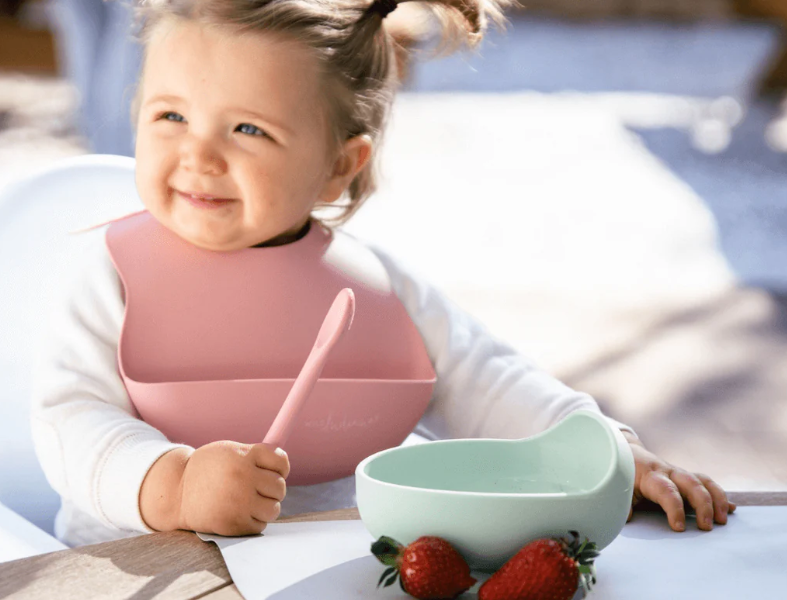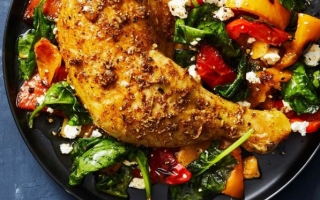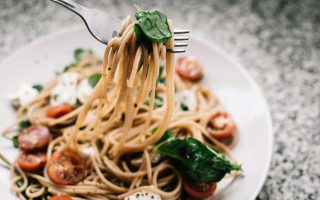Children have many underdeveloped parts of their body systems. This means they can’t handle many things adults can, including their utensils.
There are a variety of blended and unblended materials that are used in making utensils for babies. Most baby-friendly materials are made from all-natural materials, such as bamboo.
In this article, we will show you more of such kinds of materials together with their advantages, disadvantages, and the materials to avoid exposing your baby to.
What is the best material for baby dishes?
Silicone Baby Dishes
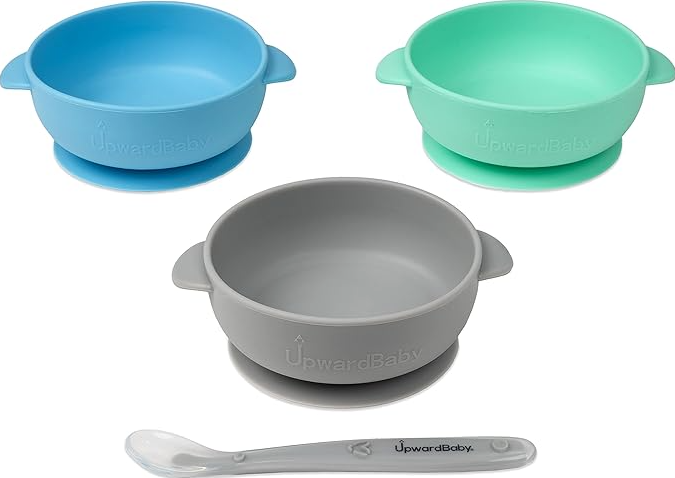
Silicone is a material made by mixing artificial rubber, plastic, and silicone bonded with oxygen(siloxane).
Its advantages include that it’s non-toxic because of its stable nature in reactivity, durable because of the non-degradable artificial polymers it is made with, and flexible because of its bonds.
Silicone is also heat-resistant, making it a good insulator; hence, it won’t burn when carried from one place to another. Lastly, they are easy to clean because of the non-staining property of plastic. This will allow you to store food in them for a very long time without the dish gaining a stain.
When picking this material, you still need to consider some factors. Choose high-quality silicone that is extremely heat resistant so that the plastic part of it doesn’t make its way into your baby’s food. You should also dispose of them appropriately when they are damaged or destroyed because they are non-biodegradable; therefore, they can pollute the land.
Bamboo Baby Dishes
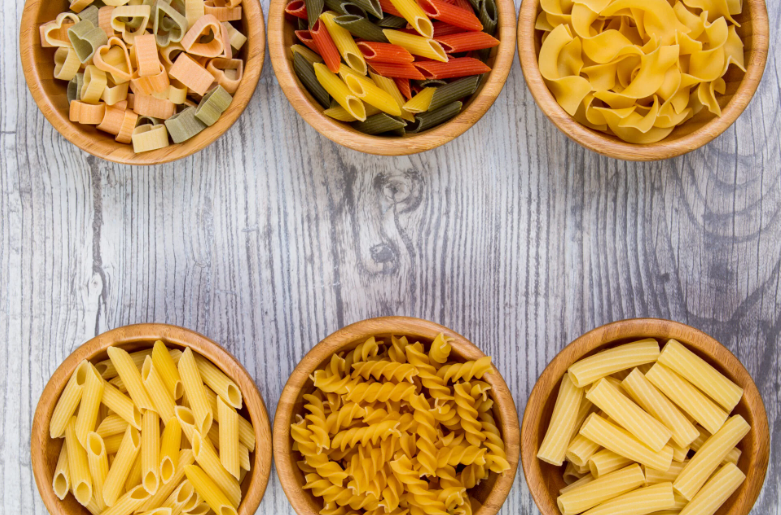
Bamboo is another safe, natural material made from the wood from bamboo trees. Since they are directly from nature, they are eco-friendly and biodegradable. The bamboo tree structure is hollow, with its fibers running parallel to the tree stem, and they are linked together with a lot of lignin, making it lightweight and hard.
Bamboo is also naturally antimicrobial, with this property being obtained from its high lignin content. Lignin is the substance that strengthens the tree stem, and it also has aromatic and phenolic properties that are antimicrobial agents. This property will allow the baby dishes to remain sterile even when exposed to germs, e.g., by storing food in them for too long.
However, since bamboo is still wooden, avoid exposing it to water for too long because it can rot or absorb the food’s odors or stains.
Stainless Steel Baby Dishes
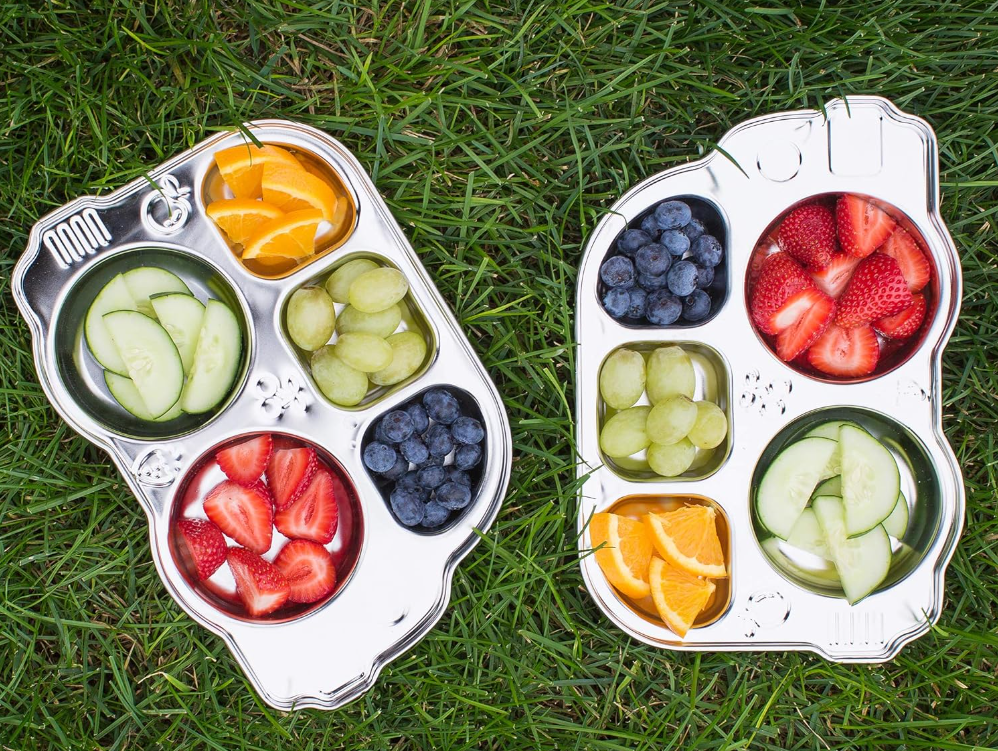
Stainless steel is also an excellent choice of baby dish material. Steel is an iron and carbon alloy that was created to overcome the setbacks using pure iron utensils. Steel has much stronger bonds between its atoms, making it durable. It is also non-toxic because of the stability of the elements used to make it and its neutrality in many reactions.
Steel utensils are also easy to clean because they don’t absorb any odors or stains, including day, which is usually the hardest stain to get rid of. Its ease of cleaning makes it resistant to bacteria because bacteria can easily wash off and cannot grow on it if left there for too long.
However, also note that steel has very high heat conductivity and hence has low insulation. It is unsuitable for microwave use, too so you’ll need to buy alternative microwave-safe utensils to warm your baby’s food which can be inconvenient for you.
Glass Baby Dishes
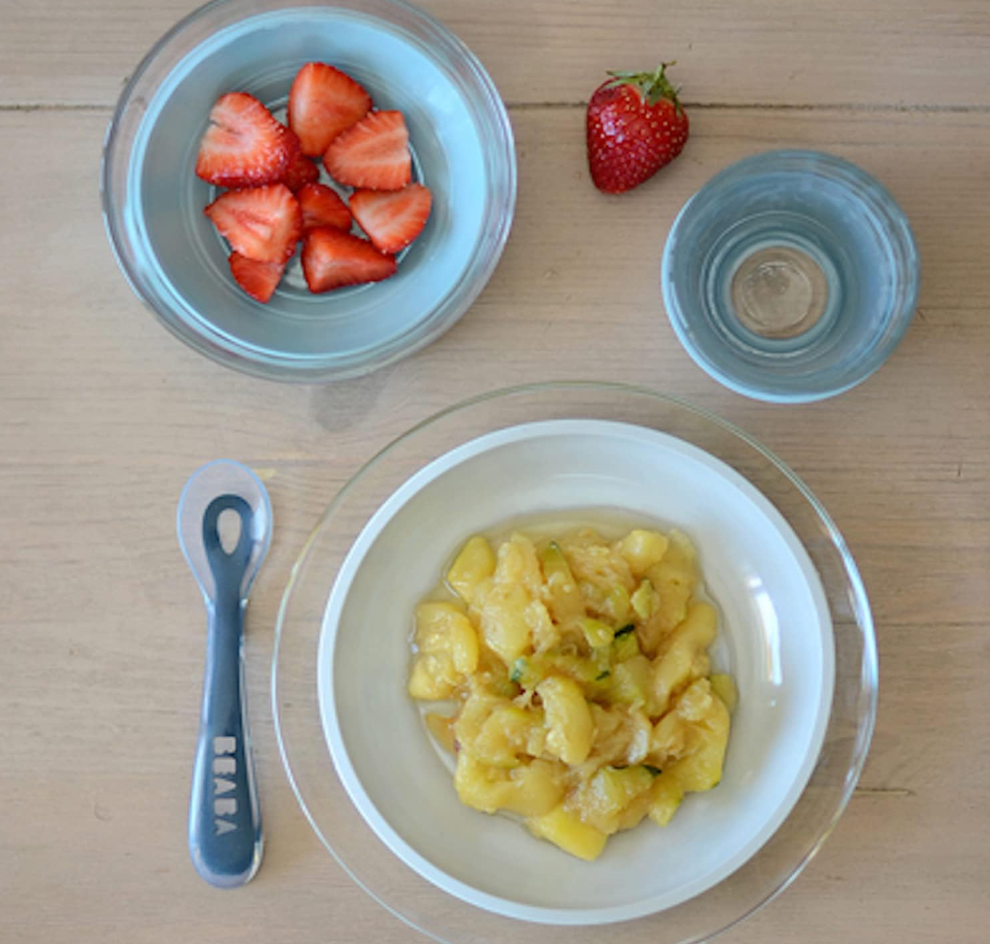
Glass is another excellent choice for a baby’s utensil material. It is made from melted and combined sand, lime, and the silicon element. It is normally brittle, but some types are strengthened to be more resistant to heat and force.
Some glasses are not clear, but have designs, and colors, or are made translucent. Since it is made from neutral materials, it is non-toxic and free from chemicals. Glass is also easy to clean because it doesn’t absorb stains or odors.
The setbacks that come with glass include its high breakability, so avoid sudden temperature changes with it, or buy more resistant models. It is also heavy, so pick utensils with a firm grip or handle. Since babies can be clumsy, you’ll be doing most of the handling of these utensils.
Materials To Avoid In Kids’ Dishes & Dinnerware
Bisphenol A (BPA)
BPA is short for bisphenol A and it is formed from the condensation reaction of phenol and acetone. Its properties include that it is clear and insoluble in water, which makes it useful in the manufacture of plastic.
BPA was used up until recently when researchers discovered its lethal disadvantages. It is cancerous, meaning that it can cause cancer in children and adults who use it for long periods. It can also cause developmental issues as it affects the functioning of various hormones, including the growth hormone.
You can identify and avoid BPA in products by reading the label or looking at the plastic identification number usually at the bottom of the container.
Phthalates
Phthalates, also called plasticizers, are esters of phthalic acids. They are called plasticizers because they are used to make plastic more flexible.
However, they were recently considered unsafe because when they are used to make plastic, they are only physically not chemically bound to the plastic. This means that they can easily be consumed when using them as utensils.
Phthalates are endocrine-disrupting hormones meaning that they can stop the normal function of hormones in the reproductive and neural systems. This can distort the development of your child.
Read the utensil labels for chemical acronyms belonging to the phthalates group such as DMP (dimethyl phthalate).
Lead and Cadmium
Lead and cadmium are metals that are used in paint to make it dry quicker, last longer, and maintain a new appearance even after a long time. Utensils painted with cadmium or lead-based paint are harmful to children and adults too.
Lead and cadmium exposure can cause significant damage to the body whether in low or high amounts. Neurological damage, kidney issues, and altered brain development in children are some of the effects of lead and cadmium poisoning.
Lead and cadmium-painted dishes are especially common in antique or imported items. Avoid buying such utensils for you and your baby. Recent utensils don’t have lead, but to be safe read labels, or avoid painted crockery and cutlery altogether.
Melamine
Melamine is a material based on nitrogen compounds that were created in the 1859s. It is a form of plastic resin.
Melamine is prone to chipping, and it can be absorbed in the digestive system. The kidneys find it hard to eliminate it from the body especially when it forms compounds when heated or in contact with acids in food or the body. This can lead to renal failure or kidney and bladder stones which can be extremely painful.
Their absorption also irritates the gut’s mucous membrane. It is advised to avoid melamine baby dishes so that your child remains safe from all the discussed effects. This is because its risks outweigh its benefits.
Polyvinyl Chloride (PVC)
Polyvinyl chloride is a synthetic plastic polymer that has extensive applications in making not only utensils but also cables and pipes.
PVC is usually made with additional chemicals such as phthalates to enhance its quality, but these materials can be harmful. They can leach out under the right conditions, such as heat and enter your child’s body.
This can lead to nausea, damage to the liver since it is the organ that detoxifies the body, and damage to the reproductive system. If the PVC material you are using contains more toxic chemicals, then the effects your child will experience will be more.
To protect your child from this, avoid buying them PVC utensils or any other products. Carefully read the labels on the items you buy to avoid making the mistake of unknowingly exposing your child to polyvinyl chloride.
FAQs
Are ceramic plates safe for kids?
Yes, they are. They are made from clay, stone, or earthenware which are chemical-free materials. They, however, are brittle hence your kids will need to use them under supervision.
What is the safest material for a baby bowl?
Silicone is the most preferred material for a baby bowl. It is free from harmful chemicals, highly heat resistant, and durable if handled properly.
What is the best material for children’s cutlery?
Silicone remains the safest material for baby bowls and cutlery for the same reasons we have discussed with you above.
Is stainless steel safe for babies?
Steel can have trace elements in it that may cause your baby allergies. However, it can remain safe for most babies, it all depending on their immunity.
Nurturing Health: Making Informed Choices for Kids’ Dinnerware
We hope that this article has helped you find the right materials to select when picking out baby dishes. Most item labels have information on what was used in manufacturing the utensil, so you can read it to note any harmful allergens or chemicals to your baby. You can also remain safe and pick the already neutral materials.
You can try this personalized 4-piece set of children’s dinosaur unicorn cutlery. It is a stainless steel cutlery set for babies that is customizable into different colors and patterns of either a dinosaur or a unicorn. It can also have your baby’s name on it if you prefer. This cutlery set will make eating time more exciting and interesting for you and your baby.
